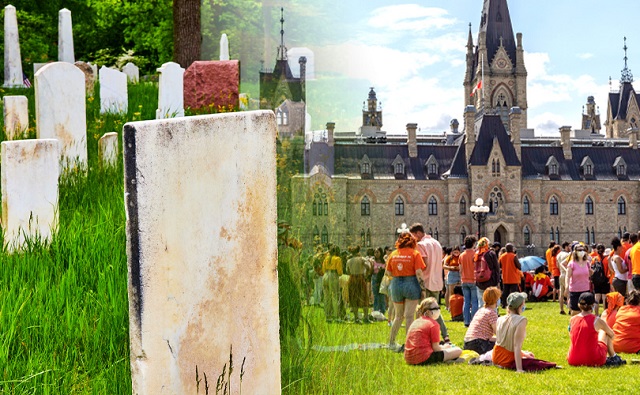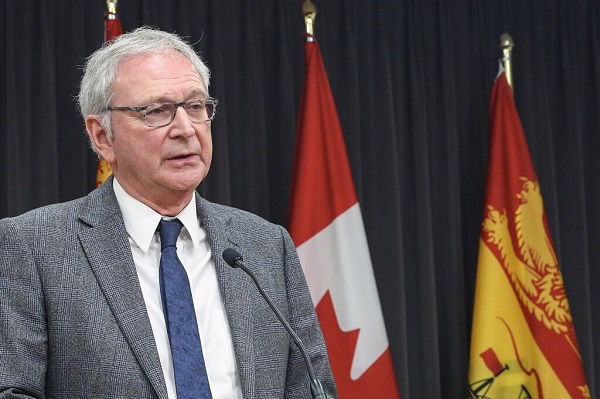Opinion
Hope Mission looks to fill in for the inaction of the city and school boards north of the river

Hope Mission, a not-for-profit agency sees a need for a youth centre for the under-privileged in Red Deer’s north. Commenting about the children who cannot afford the luxury of bouncing a basketball in a city facility. Now add in the lack of a high school and with it gym space, programs and facilities available in the south, and you can understand why they believe in the need.
I have been suggesting for quite sometime that we should develop Hazlett Lake in Red Deer’s north, especially with the opening up of land in that area north of Hwy 11A offering housing to 20,000 new residents.
Hazlett Lake is almost exactly the same distance from the Riverlands as the Collicutt Centre, (6 kms.) and if that is to be the crowning jewel of our city, then it would only be fair to have bookends in the NW and SE equidistant away.
Building a 50m pool and an indoor ice rink on Hazlett Lake would offer opportunities to those who cannot afford a pass for indoor pool can swim in the lake, and in winter skate on the lake if they cannot afford to skate indoors. It would also cut down the burdensome expense and time for commuting by the north side residents. A 50m pool would supply a need for competitive swimming, sorely lacking and requested in Red Deer.
The city hasn’t built a school north of the river since 1985, along with an indoor pool or indoor ice rink. The city has never built a high school north of the river, even with a possible future population of 55,000 residents, and is concentrating all facilities to be built south of the river, with the teeniest of hope for another rink at the Dawe Centre but reading between the lines, that is but the teeniest of hopes.
777 residents left Red Deer from north of the river, vacancy rate has risen to unprecedented levels, unemployment has shot up, as have crime and yet the city talks about building more high schools south of the river, fixing up tennis courts, replacing ice rinks and swimming pools south of the river. Building a $20-million footbridge for the downtown residents so they won’t have to walk 300m further and walk on Taylor Bridge.
The city and the school boards have neglected the residents north of the river, so extremely that charities have to step up to the plate. Hope Mission you got my support. Kudos to you.
I know that everyone hopes that we will see another boom in the energy sector, with the pipeline approvals, but let us keep our eye on the ball. Tourism, staycations, under-privileged children will still be issues that should be addressed now as there will almost definitely be another bust.
Time is now to look at Hazlett Lake before the city commits itself to the downtown with a new pool and a concert hall leaving no money available for the north side of the river, and divides the area around Hazlett Lake into small parcels divided among the developers.
Many of us believe it is important. Hope Mission believes it is important. The city and school boards may not, but I think you do. Right?
Brownstone Institute
The WHO’s Proposed Pandemic Agreements Worsen Public Health

From the Brownstone Institute
BY
The WHO decided that the response for a Toronto aged care resident and a young mother in a Malawian village should be essentially the same – stop them from meeting family and working, then inject them with the same patented chemicals.
Much has been written on the current proposals putting the World Health Organization (WHO) front and center of future pandemic responses. With billions of dollars in careers, salaries, and research funding on the table, it is difficult for many to be objective. However, there are fundamentals here that everyone with public health training should agree upon. Most others, if they take time to consider, would also agree. Including, when divorced from party politicking and soundbites, most politicians.
So here, from an orthodox public health standpoint, are some problems with the proposals on pandemics to be voted on at the World Health Assembly at the end of this month.
Unfounded Messaging on Urgency
The Pandemic Agreement (treaty) and IHR amendments have been promoted based on claims of a rapidly increasing risk of pandemics. In fact, they pose an ‘existential threat’ (i.e. one that may end our existence) according to the G20’s High Level Independent Panel in 2022. However, the increase in reported natural outbreaks on which the WHO, the World Bank, G20, and others based these claims is shown to be unfounded in a recent analysis from the UK’s University of Leeds. The main database on which most outbreak analyses rely, the GIDEON database, shows a reduction in natural outbreaks and resultant mortality over the past 10 to 15 years, with the prior increase between 1960 and 2000 fully consistent with the development of the technologies necessary to detect and record such outbreaks; PCR, antigen and serology tests, and genetic sequencing.
The WHO does not refute this but simply ignores it. Nipah viruses, for example, only ‘emerged’ in the late 1990s when we found ways to actually detect them. Now we can readily distinguish new variants of coronavirus to promote uptake of pharmaceuticals. The risk does not change by detecting them; we just change the ability to notice them. We also have the ability to modify viruses to make them worse – this is a relatively new problem. But do we really want an organization influenced by China, with North Korea on its executive board (insert your favorite geopolitical rivals), to manage a future bioweapons emergency?
Irrespective of growing evidence that Covid-19 was not a natural phenomenon, modelling that the World Bank quotes as suggesting a 3x increase in outbreaks over the next decade actually predicts that a Covid-like event will recur less than once per century. Diseases that the WHO uses to suggest an increase in outbreaks over the past 20 years, including cholera, plague, yellow fever, and influenza variants were orders of magnitude worse in past centuries.
This all makes it doubly confusing that the WHO is breaking its own legal requirements in order to push through a vote without Member States having time to properly review implications of the proposals. The urgency must be for reasons other than public health need. Others can speculate why, but we are all human and all have egos to protect, even when preparing legally binding international agreements.
Low Relative Burden
The burden (e.g. death rate or life years lost) of acute outbreaks is a fraction of the overall disease burden, far lower than many endemic infectious diseases such as malaria, HIV, and tuberculosis, and a rising burden of non-communicable disease. Few natural outbreaks over the past 20 years have resulted in more than 1,000 deaths – or 8 hours of tuberculosis mortality. Higher-burden diseases should dominate public health priorities, however dull or unprofitable they may seem.
With the development of modern antibiotics, major outbreaks from the big scourges of the past like Plague and typhus ceased to occur. Though influenza is caused by a virus, most deaths are also due to secondary bacterial infections. Hence, we have not seen a repeat of the Spanish flu in over a century. We are better at healthcare than we used to be and have improved nutrition (generally) and sanitation. Widespread travel has eliminated the risks of large immunologically naive populations, making our species more immunologically resilient. Cancer and heart disease may be increasing, but infectious diseases overall are declining. So where should we focus?
Lack of Evidence Base
Investment in public health requires both evidence (or high likelihood) that the investment will improve outcomes and an absence of significant harm. The WHO has demonstrated neither with their proposed interventions. Neither has anyone else. The lockdown and mass vaccination strategy promoted for Covid-19 resulted in a disease that predominantly affects elderly sick people leading to 15 million excess deaths, even increasing mortality in young adults. In past acute respiratory outbreaks, things got better after one or perhaps two seasons, but with Covid-19 excess mortality persisted.
Within public health, this would normally mean we check whether the response caused the problem. Especially if it’s a new type of response, and if past understanding of disease management predicted that it would. This is more reliable than pretending that past knowledge did not exist. So again, the WHO (and other public-private partnerships) are not following orthodox public health, but something quite different.
Centralization for a Highly Heterogeneous Problem
Twenty-five years ago, before private investors became so interested in public health, it was accepted that decentralization was sensible. Providing local control to communities that could then prioritize and tailor health interventions themselves can provide better outcomes. Covid-19 underlined the importance of this, showing how uneven the impact of an outbreak is, determined by population age, density, health status, and many other factors. To paraphrase the WHO, ‘Most people are safe, even when some are not.’
However, for reasons that remain unclear to many, the WHO decided that the response for a Toronto aged care resident and a young mother in a Malawian village should be essentially the same – stop them from meeting family and working, then inject them with the same patented chemicals. The WHO’s private sponsors, and even the two largest donor countries with their strong pharmaceutical sectors, agreed with this approach. So too did the people paid to implement it. It was really only history, common sense, and public health ethics that stood in the way, and they proved much more malleable.
Absence of Prevention Strategies Through Host Resilience
The WHO IHR amendments and Pandemic Agreement are all about detection, lockdowns, and mass vaccination. This would be good if we had nothing else. Fortunately, we do. Sanitation, better nutrition, antibiotics, and better housing halted the great scourges of the past. An article in the journal Nature in 2023 suggested that just getting vitamin D at the right level may have cut Covid-19 mortality by a third. We already knew this and can speculate on why it became controversial. It’s really basic immunology.
Nonetheless, nowhere within the proposed US$30+ billion annual budget is any genuine community and individual resilience supported. Imagine putting a few billion more into nutrition and sanitation. Not only would you dramatically reduce mortality from occasional outbreaks, but more common infectious diseases, and metabolic diseases such as diabetes and obesity, would also go down. This would actually reduce the need for pharmaceuticals. Imagine a pharmaceutical company, or investor, promoting that. It would be great for public health, but a suicidal business approach.
Conflicts of Interest
All of which brings us, obviously, to conflicts of interest. The WHO, when formed, was essentially funded by countries through a core budget, to address high-burden diseases on country request. Now, with 80% of its use of funds specified directly by the funder, its approach is different. If that Malawian village could stump up tens of millions for a program, they would get what they ask for. But they don’t have that money; Western countries, Pharma, and software moguls do.
Most people on earth would grasp that concept far better than a public health workforce heavily incentivized to think otherwise. This is why the World Health Assembly exists and has the ability to steer the WHO in directions that don’t harm their populations. In its former incarnation, the WHO considered conflict of interest to be a bad thing. Now, it works with its private and corporate sponsors, within the limits set by its Member States, to mold the world to their liking.
The Question Before Member States
To summarize, while it’s sensible to prepare for outbreaks and pandemics, it’s even more sensible to improve health. This involves directing resources to where the problems are and using them in a way that does more good than harm. When people’s salaries and careers become dependent on changing reality, reality gets warped. The new pandemic proposals are very warped. They are a business strategy, not a public health strategy. It is the business of wealth concentration and colonialism – as old as humanity itself.
The only real question is whether the majority of the Member States of the World Health Assembly, in their voting later this month, wish to promote a lucrative but rather amoral business strategy, or the interests of their people.
National
Despite claims of 215 ‘unmarked graves,’ no bodies have been found at Canadian residential school

From LifeSiteNews
Over 100 churches have been burned or vandalized since the Trudeau government and mainstream media promulgated, without any physical evidence, the narrative that mass ‘unmarked graves’ had been discovered at Kamloops Indian Residential School.
Canada’s Department of Crown-Indigenous Relations has confirmed it has spent millions searching for “unmarked graves” at a now-closed residential school once run by the Catholic Church, despite the fact that no human remains have been found.
In total, some $7.9 million was earmarked for a search of unmarked Indian Residential School graves in Kamloops, British Columbia. According to the spokeswoman for the Crown-Indigenous Relations, Carolane Gratton, the community got the money “for field work, records searches and to secure the Residential School grounds.”
“Details of initiatives taken by Tk’emlups te Secwepemc First Nation are best directed to the community,” noted Gratton.
To date, the Department of Crown-Indigenous Relations has not given a financial accounting under the Access To Information Act as to where the money went. According to the Tk’emlups te Secwepemc First Nation, it “continues to grieve children that are in our care and are focused on the scientific work that needs to be done,” but made no mention of the $7.9 million.
In 2021 and 2022, the mainstream media ran with inflammatory and dubious claims that hundreds of children were buried and disregarded by Catholic priests and nuns who ran some of the schools.
The Tk’emlups te Secwepemc First Nation was more or less the reason there was a large international outcry in 2021, when it claimed it had found 215 “unmarked graves” of kids at the Kamloops Residential School. The claims of remains, however, were not backed by physical evidence, but were rather disturbances in the soil picked up by ground-penetrating radar.
The money given to the First Nation was done so to find the “heartbreaking truth” of the residential school system, according to a 2022 Indian Residential School Sites: Unmarked Burials department briefing note.
“Our thoughts are with survivors, their families and communities as the heartbreaking truth about Residential Schools’ unmarked burials continues to be unveiled,” read the note.
“Funding is available to support communities, survivors and their families on their healing journey through researching, locating and memorializing those children who died while attending Indian Residential Schools.”
Canadian indigenous residential schools, while run by both the Catholic Church and other Christian churches, were mandated and set-up by the federal government and ran from the late 19th century until the last school closed in 1996.
While there were indeed some Catholics who committed serious abuses against native children, the past wrongs led to widespread anti-Catholic sentiment, which boiled over in the summer of 2021 after the discovery of the 215 so-called “unmarked” graves in Kamloops.
While some children did die at the once-mandatory boarding schools, evidence has revealed that many of the children tragically passed away as a result of unsanitary conditions due to the federal government, not the Catholic Church, failing to properly fund the system.
No human remains have been found
Soon after the Kamloops announcement in 2021, other regions claimed the presence of “unmarked graves,” which prompted Canada’s House of Commons under Liberal Prime Minister Justin Trudeau, with the help of all other parties including the Conservatives, to declare the residential school program a “genocide” despite the lack of evidence.
The reality is that to date, no human remains have been found at the Kamloops site or other sites.
In fact, in August 2023, the Pine Creek Residential School, located in Pine Creek, Manitoba, underwent a four-week excavation and yielded no remains.
The excavation was led by a First Nation’s tribe called Minegoziibe Ashinabe, and came after a total of 14 abnormalities were found at the former school by ground-penetrating radar.
There have been other excavations conducted at residential schools that have likewise turned up no human remains.
Since the spring of 2021, over 100 churches, mostly Catholic, have been burned or vandalized across Canada. The attacks on the churches came shortly after the “unmarked graves” narrative began.
Despite the church burnings, the federal government under Trudeau has done nothing substantial to bring those responsible to justice or to stem the root cause of the burnings.
“I think Canadians have seen with horror those unmarked graves across the country and realize that what happened decades ago isn’t part of our history, it is an irrefutable part of our present,” Trudeau had earlier remarked to reporters.
The unmarked graves controversy also spurred a Senate committee in 2023 to claim that anyone who questions the graves is engaged in “Residential School denialism.”
“Denialism serves to distract people from the horrific consequences of Residential Schools and the realities of missing children, burials and unmarked graves,” said a Senate Indigenous peoples committee report titled Honouring The Children Who Never Came Home.
The Senate committee report said that the Canadian government should “take every action necessary to combat the rise of Residential School denialism.”
Jordan Peterson tells Pope Francis to ‘take note’
Responding to reports about the Trudeau government spending nearly $8 million without finding a single body, renowned anti-woke Canadian psychologist Jordan Peterson took a shot at Pope Francis.
“Pope Francis take note @Pontifex,” wrote Peterson on X (formerly Twitter) last Thursday.
Pope Francis take note @Pontifex https://t.co/YAyKDtMa4A
— Dr Jordan B Peterson (@jordanbpeterson) May 9, 2024
Peterson’s remarks likely came in light of the fact that Francis visited Canada in the summer of 2022 for the purpose of apologizing for churchmen’s role in the operation of the residential school program.
During his July 2022 trip, Francis visited First Nations in Alberta and Quebec. While in Quebec, he seemed to join in on a pagan “smudging” ritual before giving a lengthy speech where he conveyed “deep shame and sorrow” for the role played by Catholic Church members in government-funded residential school abuses.
While Francis seemed to go along with the mainstream narrative regarding residential schools, others have spoken out.
Last year, retired Bishop of Calgary, Frederick Henry, blasted the blatant “lie” that thousands of missing indigenous children who attended residential schools run by the Catholic Church were somehow “clandestinely” murdered by “Catholic priests and nuns.”
The founder of the National Post, Conrad Black, also made similar statements as Henry in an opinion piece for his former paper, calling the entire narrative a “fraud.”
-

 Brownstone Institute1 day ago
Brownstone Institute1 day agoMedical Elites’ Disgrace Over Ivermectin
-

 Opinion1 day ago
Opinion1 day agoThe American Experiment Has Gone Down In Flames
-

 conflict1 day ago
conflict1 day ago‘It Makes No Sense’: Experts Puzzled By Biden Admin’s Claim That Rafah Invasion Wouldn’t Help Israel Defeat Hamas
-

 COVID-191 day ago
COVID-191 day agoThe New York Times Admits Injuries from COVID-19 Shots
-

 Bruce Dowbiggin1 day ago
Bruce Dowbiggin1 day agoWhy Do The Same Few Always Get The Best Sports Scoops?
-

 Energy1 day ago
Energy1 day agoFederal government continues to reject golden opportunities to export LNG
-

 Energy24 hours ago
Energy24 hours agoBuckle Up for Summer Blackouts: Wind Is Already Failing Texas in Spring
-

 Opinion17 hours ago
Opinion17 hours agoCanada’s fertility, marriage rates plummet to record lows: report









